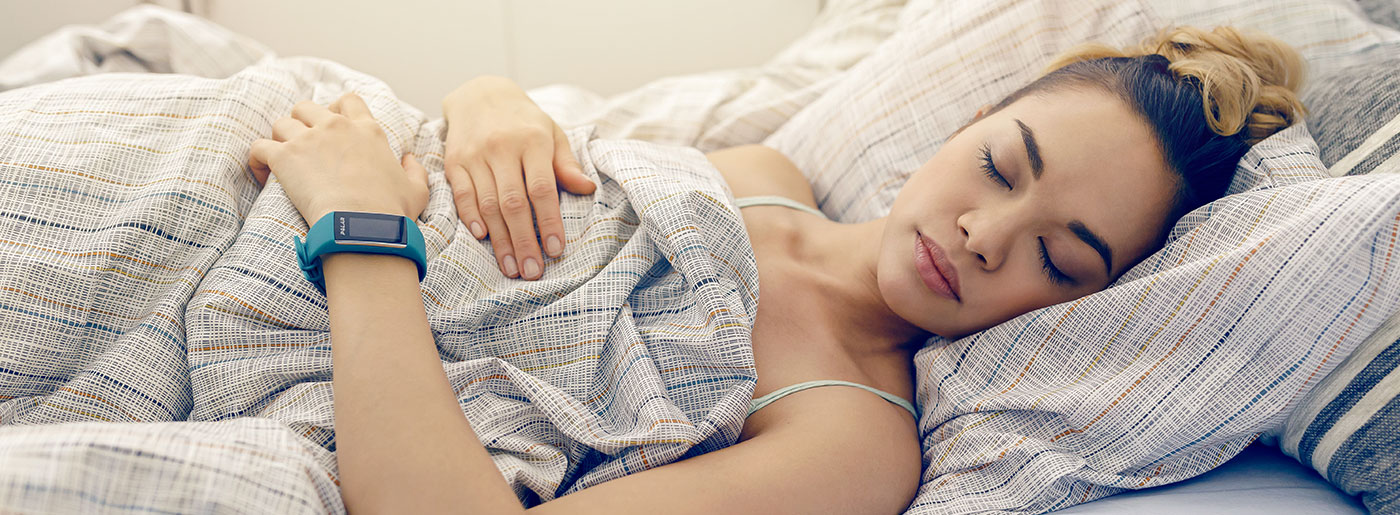This is the real deal, your big goal race ahead: Would you skip a training session or toss your healthy nutrition plan out the window, even for a day? No way, right? But are you neglecting one of the key areas in preparing for your race?
Most of us would not compromise our strict diet and a carefully planned training routine to achieve our race goals. We’re ready to go beyond lengths to work on our physical performance and prepare mentally, but why do we often turn a blind eye to the good ol’ shut-eye?
Just like a detailed training routine and a specific diet, sleep is one of the crucial pieces in the puzzle when you’re preparing for a race – and equally important throughout the training season. Preparing for a race takes a lot of effort even when you’re at home, in familiar surroundings and routines with no extra pressure. It’s a whole different game when you have to travel to a different time zone for a race and maximize your performance despite the grueling jet lag.
So, how can you adjust your body and sleeping rhythm to racing in a different time zone? The need for sleep and sleeping rhythms are individual so there isn’t a one-size-fits-all solution to the dilemma. But, we can learn from the pros and try to apply their best practices to minimize the effects of jet lag.
We asked professional triathlete Chris Leiferman from the BMC-Vifit Sport Pro Triathlon Team to share his tips on how to fight jet lag when racing in a different time zone.
Start adjusting your rhythm as soon as you get off the plane
“If I get to my destination too late and don’t allow myself enough time to adjust to the time difference, I won’t feel 100% rested to race at my best level,” Chris Leiferman says. “If your body is programmed to be in rest/sleep mode and you’re trying to force yourself to go full gas, it’s obvious that’s not going to work.”
That’s why Chris aims to leave for domestic races three days in advance.
“East Coast races are only two hours ahead and Pacific races are only an hour behind. East Coast tends to be a bit tough on race mornings but I try to get as much sleep as possible on the days leading up to the race. That way the day before the race may be tough but it’s not a big deal as I’ve been sleeping well and feeling good before that.”
Try to leave a day per each hour of time difference to adjust.
When Chris travels overseas, he tries to leave a day per hour of time difference to adjust. For example, if the time difference is eight hours, he will try to get to the race destination eight days in advance. This leaves him enough days to adapt before the race.
“It can be hard the second and third day of sleep as your body is still in your own time zone but forcing yourself to stay awake until the appropriate bedtime is important. That way you can switch to the destination time zone as soon as possible,” Chris says.
“The first night is typically easy because you’re tired from the travel but the second and third nights are when it kicks in. Then you just have to battle it and force yourself to go to bed at night and stay up all day so that you can tire yourself out for the next night. The fourth night is about when you’re dialed in on the new time zone.”
Most sleep recommendations advise not to shift your sleeping rhythm by more than 30 minutes per day.
Even if you’re able to leave one hour per day to adjust, it may not be enough: Most sleep recommendations advise not to shift your sleeping rhythm by more than 30 minutes per day.
And for most of us, it’s not possible to travel enough in advance to have several days to adjust at the race destination. In that case, you can start making the switch before you travel by moving your sleeping rhythm gradually (max. 30 minutes per day). Even a small shift closer to the time zone of your destination is better than nothing when trying to fight jet lag.
Chris Leiferman’s 4 tips on how to fight jet lag
1. Whatever you do, don’t nap!
“The biggest challenge is getting through the first couple of nights but if you nap in the middle of the day (night time your time), it will take longer for you to adjust.”
2. Cut off caffeine
“Trying to cut off your caffeine intake early enough before bed so that your cortisol levels aren’t through the roof. You don’t want to be a zombie in front of other people but it may be a sacrifice needed to dial yourself in on time.”
3. Get up when the buzzer goes off
“Go to bed at a normal time, not too early, and then set an alarm to avoid sleeping in. This way, you’ll be tired when the night comes and get your rest while getting yourself in sync with the new time zone.”
4. Try getting a jump start
“One idea I haven’t tried yet is getting on the new time zone the day before I arrive in my destination. This would be forcing myself to fall asleep on the plane when it’s nighttime in my destination and then set an alarm at a normal time even though I’m still on the plane and it could potentially be my normal sleep time at home. I haven’t done this yet as I try to start adjusting to the time difference as soon as I land, but this could potentially give me a one-day jump-start.”
+1 bonus
As we humans are highly sensitive to the timing and brightness of light exposure, our addition to this list is: “play” with light.
Dim the lights before you go to bed and expose yourself to light when you get up. Particularly natural light sends your body a message that it’s the time to “rise and shine” so the best thing to do in the morning is to head outdoors and let the sun do its magic.
SLEEP TRACKING CAN HELP YOU WIN THE BATTLE AGAINST JET LAG
The most important indicator of whether you’ve succeeded to adjust your body to the destination time zone is, of course, how you feel. In addition to your subjective assessment, you can track your sleep to get a more accurate view of how you usually sleep at home and how your sleep changes when you’re traveling.
Sleep tracking will help you find out how you sleep and how changes affect your sleep.
If you track your sleep regularly before the race when you’re still at home, you can try to identify the factors that help you sleep better. You can then use that insight to maximize your chances to sleep well in your destination before a race and prevent jet lag from getting in the way of your success.
If you liked this post, don’t forget to share so that others can find it, too.
Or give it a thumbs up!
I like this article
Please note that the information provided in the Polar Blog articles cannot replace individual advice from health professionals. Please consult your physician before starting a new fitness program.






